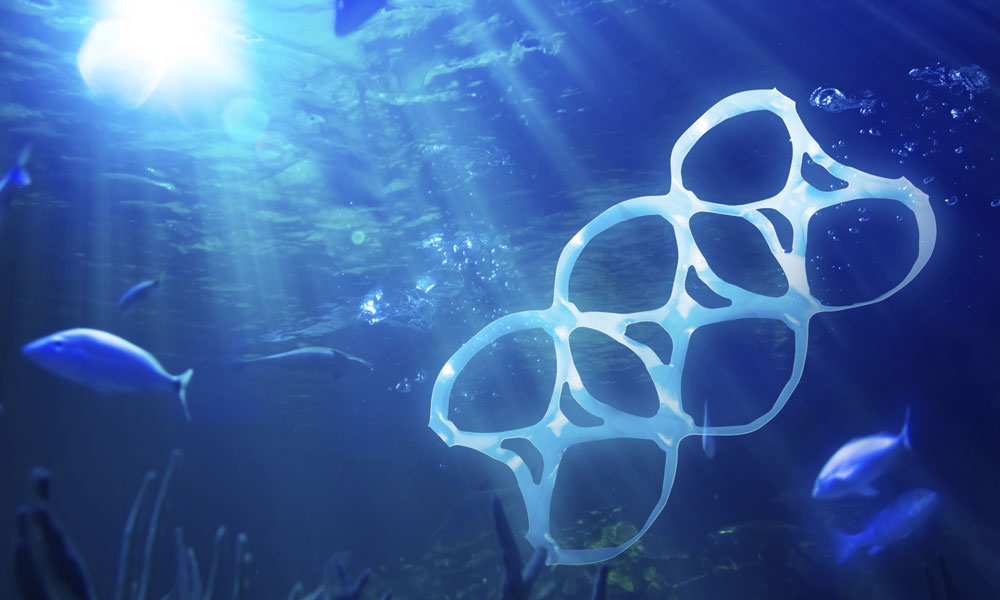
Global Plastics Industry Picks Up Marine Litter Reduction Efforts
As millions of Americans head to the beach this summer in search of sun, surf, and seafood, a coalition of 60 international associations is working to reduce the chance that they find something else: plastic marine litter.
No one goes to the beach longing to wiggle their toes in discarded plastic.
To reduce the likelihood that beachgoers and marine wildlife will encounter plastic where they expect to find clean water and sand, a coalition of dozens of plastics industry associations around the world has been working to combat plastic marine litter. Its latest progress report has good news.
The report, released last week, shows a 90 percent increase in the number of anti-litter marine projects and pilot programs generated by plastics industry associations worldwide. The marked progress is largely in response to the Declaration of the Global Plastics Associations for Solutions on Marine Litter, originally signed by 47 industry organizations in March 2011 at the Fifth International Marine Debris Conference.
“It’s a complex problem, one that governments, industry NGOs, and others need to work together to help solve,” said Keith Christman, managing director of the Plastics Division of the American Chemistry Council (ACC). “And it’s a problem that crosses international borders. As we see more nations expanding their use of plastic products, there is potential for more waste and litter.”
Six-Pronged Approach
Marine debris includes human-manufactured materials ranging from glass to abandoned fishing gear, much of which sinks and causes environmental harm to fish, habitats, and water quality. But according to the U.S. Environmental Protection Agency, plastics and plastic pellets make up 60 percent to 80 percent of litter found floating on top or just below ocean surfaces worldwide.
Reducing those figures will require a six-pronged approach outlined in the declaration, as well as a steady, sincere commitment, say industry leaders. The new report shows that declaration signatories have responded by developing, sponsoring, or completing 185 programs and pilots in six focal areas: research, education, public policy, sharing best practices, plastics recycling and recovery, and containment of plastic resin pellets.
“Across the globe and in a remarkably short amount of time, we’ve seen a ramp up of programs that address marine debris,” Karl Foerster, executive director of PlasticsEurope, said in a statement. “Cooperation between different stakeholders is crucial to tackle this very serious issue, and we believe [it] is the right path to follow.”
He and fellow signatories hope that other associations, especially those representing companies using plastics, will hear that the industry is working to reduce marine litter and want to pitch in. “We would love to work with them and create new partnerships,” ACC’s Christman said, noting that the list of signatories has grown from 47 to 60 in three years.
Among the projects highlighted in the report are an app about plastics recycling, a Clean Communities Competition in Baltimore, and an “I want to be recycled” plastic bottle campaign by Keep America Beautiful and the Ad Council. Also on the list is this Gangnam-style celebrity public service announcement that humorously hassles concert musicians about using confetti:
Changing Behavior
Where does changing individual behavior fall into the solution? The industry and its partners are still figuring out what works.
Ironically, research by Keep America Beautiful has found that “people’s perspective of the biodegradability of a product actually increases their likelihood to litter,” said Christman. “Convenience of recycling bins and the availability of trash receptacles also impact littering rates.”
He noted that ACC’s project with Keep California Beautiful and California state parks to put 700 recycling bins on beaches is one pilot approach to reclaim waste plastic, a move that other coastal states are pondering or trying.
The industry faces complications with biodegradability, too: Many products developed for biodegradability don’t degrade in a marine environment. “A lot of research and innovation are going on there, but it’s going to take a more comprehensive approach—there are no silver bullets,” Christman said.
(iStock/Thinkstock)






Comments